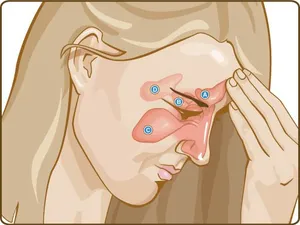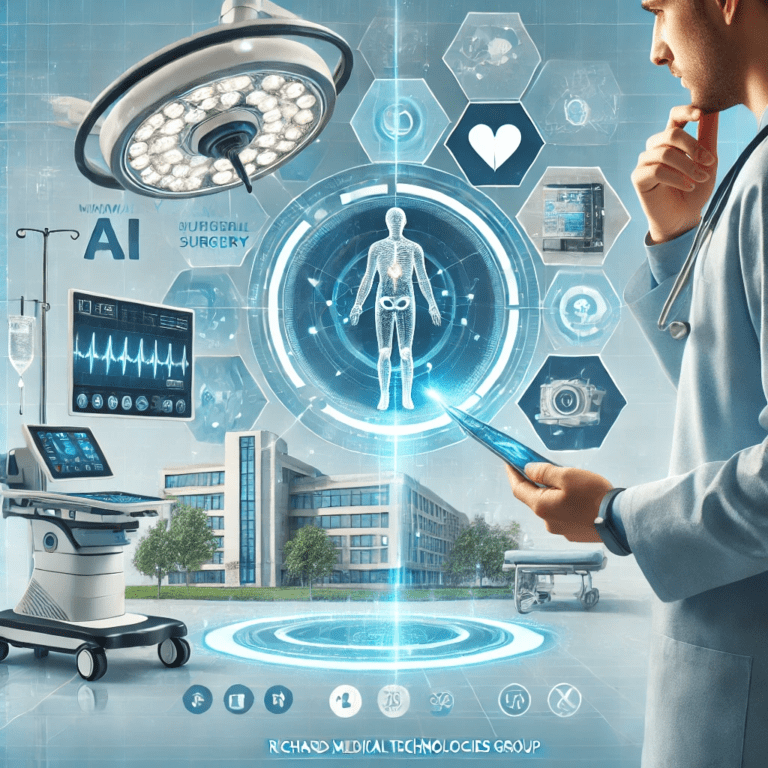Chronic Sinusitis in a Digital World: How Technology Is Improving Sinus Treatments
Living with chronic sinusitis can be challenging. From managing recurring symptoms to tracking triggers and staying connected with healthcare providers, sinusitis patients often need ongoing support. Fortunately, technology is making it easier than ever to stay on top of sinus health. Telemedicine, digital tools, and mobile apps are revolutionizing sinus care, providing patients with tools to manage symptoms, identify triggers, and connect with doctors from the comfort of home. Let’s dive into how these innovations are improving sinusitis treatments and making life easier for those living with chronic sinus issues.
1. Telemedicine: Accessing Sinus Care Anytime, Anywhere
Telemedicine has become an invaluable tool for chronic sinusitis patients, providing accessible, convenient care from the comfort of home. With virtual appointments, patients can consult with ENT specialists, receive guidance on managing symptoms, and avoid the hassle of traveling to a clinic.
- Easy Access to Specialists: For chronic sinusitis patients, regular visits with an ENT specialist can be essential. Telemedicine allows patients to connect with experts who may not be located nearby, making specialized care accessible.
- Follow-Ups Made Simple: For patients recovering from sinus procedures or adjusting treatment plans, telemedicine follow-ups allow for quick, convenient check-ins to discuss progress and receive personalized advice without an in-person visit.
- Reduced Exposure to Allergens or Viruses: Chronic sinusitis sufferers may have sensitivities that make them vulnerable to allergens or infections. Virtual appointments allow them to access care without the risk of exposure to crowded waiting rooms.
Why It Matters: Telemedicine makes ongoing chronic sinusitis treatment in Seattle WA more accessible and convenient, reducing travel and stress while allowing patients to receive timely support and treatment adjustments.
2. Mobile Apps for Symptom Tracking and Trigger Identification
Mobile apps designed for health management allow chronic sinusitis patients to track symptoms, identify triggers, and monitor treatment effectiveness—all from their phones.
- Symptom Logging for Patterns and Trends: Apps like MySinusitis Log or generic health tracking apps enable patients to record symptoms, helping them identify patterns and trends over time. This data can be shared with doctors to inform treatment.
- Trigger Identification: Sinusitis symptoms can often be triggered by environmental factors, like pollen, weather changes, or humidity. Apps like Allergy Alert provide real-time information on air quality, pollen count, and weather conditions, allowing patients to avoid potential triggers.
- Medication and Treatment Reminders: Apps can also help patients keep track of medication schedules, nasal irrigation, and other daily treatments, ensuring consistent care and better outcomes.
Why It Matters: Mobile apps empower patients to take charge of their sinus health by providing insights into symptom patterns and triggers. This knowledge allows patients to manage symptoms proactively and improve overall quality of life.
3. Wearable Devices for Real-Time Monitoring and Prevention
Wearable health tech, such as smartwatches and fitness trackers, is increasingly being used by chronic sinusitis patients to monitor environmental factors and symptoms that can exacerbate sinus issues.
- Tracking Environmental Conditions: Certain wearable devices monitor temperature, humidity, and air quality—all of which can affect sinus health. For instance, humidity changes are known to trigger sinus flare-ups, and tracking these conditions can help patients take preventive measures.
- Sleep Tracking to Monitor Rest Quality: Sinusitis can disrupt sleep, and wearable devices with sleep-tracking features provide insights into sleep patterns. This information can guide patients in adjusting their routines or seeking further medical advice if sinus issues are affecting sleep quality.
- Activity Monitoring to Gauge Wellness: Activity trackers also help patients monitor physical activity, heart rate, and stress levels, which can affect their overall health and, indirectly, their sinus health.
Why It Matters: Wearable technology offers real-time insights that help patients manage and prevent symptoms, allowing them to adjust their environment or routines to support sinus health.
Conclusion
From telemedicine consultations to wearable health devices and AI-powered assistants, technology is transforming how chronic sinusitis patients manage their condition. These tools empower patients to take an active role in their sinus health, making it easier to track symptoms, identify triggers, and communicate with healthcare providers—all from the convenience of home. As technology continues to evolve, so will the options for sinus care, providing chronic sinusitis patients with more effective, personalized solutions for managing their health in a digital world.
FAQs
1. Can telemedicine really replace in-person visits for sinusitis treatment?
Yes, telemedicine is effective for routine sinus care, follow-ups, and initial consultations. However, in-person visits may still be necessary for diagnostic imaging or complex cases.
2. What mobile apps are useful for managing sinusitis symptoms?
Apps like MySinusitis Log, Allergy Alert, and Ada Health help track symptoms, identify triggers, and offer health insights tailored to sinus patients.
3. How do wearable devices help with sinusitis management?
Wearables can monitor environmental conditions, sleep quality, and overall health, which can impact sinusitis symptoms. Tracking these factors helps patients make proactive lifestyle adjustments.
4. What is digital therapeutics, and how does it benefit sinus patients?
Digital therapeutics are app-based programs that offer guided exercises, stress management, and education to support chronic conditions. For sinusitis patients, these tools provide valuable resources for symptom relief.
5. How secure are patient portals for managing health information?
Patient portals use encryption and secure login processes to protect patient data, ensuring that personal health information remains private and secure.






